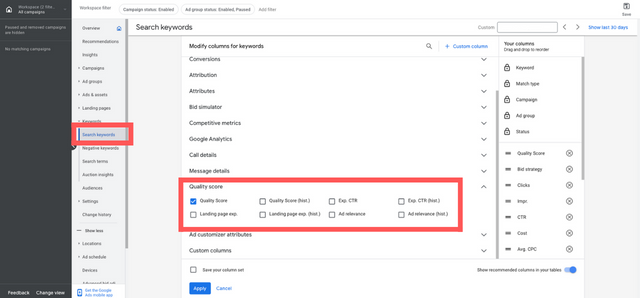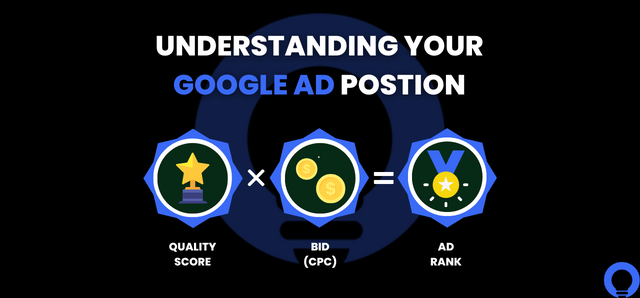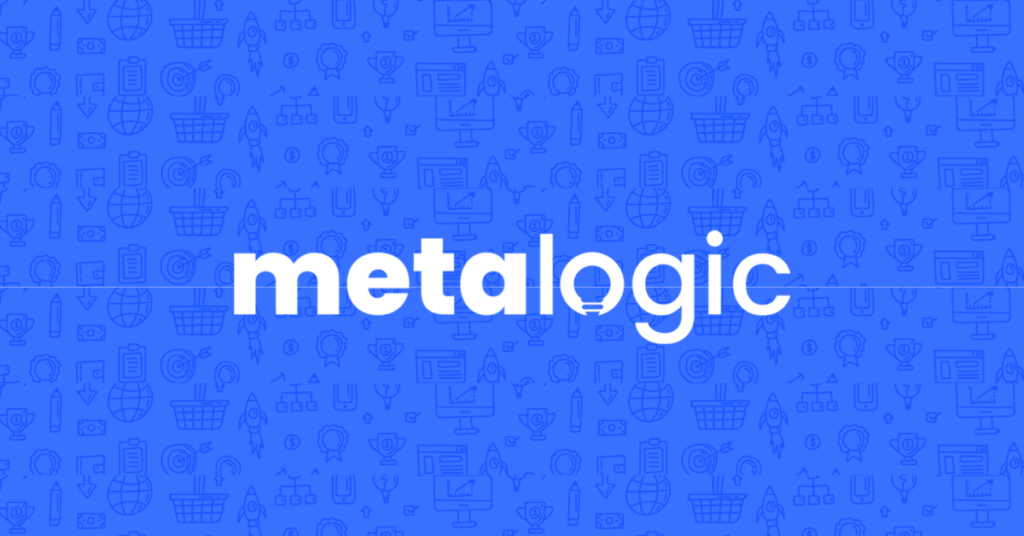Google Ads Quality Score

Nick Czerwinski
PPC & Local SEO Specialist
Understanding Quality Score in Google Ads
In Google Ads, your search keywords are assigned a Quality Score by Google, which evaluates the relevance and effectiveness of your keywords, ads, and landing pages for the viewer. This score, which ranges from 1 to 10, with 10 being the highest, indicates how well your ad aligns with the search query and how well-optimized your landing page is. A high Quality Score can result in lower costs and higher ad placements within the algorithm.
Importance of High Quality Score to Google Ads Performance
Advantages of Achieving a Good Quality Score in Google Ads
Lower Cost per Click (CPC): Ads with a high Quality Score are more likely to be shown in higher ad positions, leading to lower CPCs and better return on investment (ROI) for your campaigns.
Higher Ad Positions: Ads with a high Quality Score are more likely to be shown in higher ad positions, resulting in increased visibility and potential clicks for your ads.
Improved Ad Relevance and Effectiveness: Ads with a high Quality Score are more likely to be relevant and valuable for the user, leading to higher click-through rates (CTR) and conversion rates.
Better Account Performance: Advertisers with high Quality Scores tend to have better account performance and are less likely to be flagged for policy violations.
Better User Experience: Ads with a high Quality Score are more likely to comply with Google’s advertising policies and provide a better user experience, which helps maintain a high level of trust for users in the search results.
Overall Account Performance: A good Quality Score is essential for the long-term sustainability of your account. Advertisers with high Quality Scores tend to have better account performance and are less likely to be flagged for policy violations.
What Happens If You Have A Low Quality Score?
Higher Cost per Click (CPC): Ads with a low Quality Score are more likely to be shown in lower ad positions, leading to higher CPCs and lower return on investment (ROI) for your campaigns.
Lower Ad Positions: Ads with a low Quality Score are more likely to be shown in lower ad positions, resulting in decreased visibility and potential clicks for your ads.
Decreased Ad Relevance and Effectiveness: Ads with a low Quality Score are less likely to be relevant and valuable for the user, leading to lower click-through rates (CTR) and conversion rates.
Poor Account Performance: Advertisers with low Quality Scores tend to have poor account performance and are more likely to be flagged for policy violations
Poor User Experience: Ads with a low Quality Score may not comply with Google’s advertising policies and provide a poor user experience, which can harm users’ trust in the search results.
Exploring the Components of Quality Score in Google Ads
Your Google Ads quality score is broken down into three factors:
- Ad Relevance: The relevance of your ad to the user’s search query is evaluated by how well it aligns with the intent behind the user’s keywords. This means that the ad must be relevant to the specific topic or information the user is searching for and should match the user’s intent as closely as possible.
- Landing Page Experience: The usability and relevance of the webpage that users are directed to after clicking on an ad. Landing page experience is measured based on how well the page matches the ad, how well it aligns with the user’s search query, and how easily users can find what they are looking for on the page.
- Expected CTR: Expected CTR is the likelihood your ad is clicked by someone when your ad shows on the SERP. This is calculated based on the historical performance of the ad, the relevance of the ad to the user’s search query, and other factors that may affect user behavior.
To view your current quality scores in Google Ads, click on keywords > search keywords > Columns > Modify Columns > Quality Score. Under Quality score, you can view your quality score as a whole or break it down into three categories: Ad Relevance, Landing Page Experience, and Expected CTR. Once you have selected the columns you want to view, click “Apply,” and the data will populate with your search keywords.

Ad Relevance
Ad relevance in Google Ads refers to how closely your ad matches the intent behind a user’s search query. It measures how well your ad aligns with the specific topic or information the user is searching for and how well it meets its needs. Google uses this metric to evaluate the Quality of your ad and how useful it will be for the user.
A highly relevant ad is more likely to be clicked on and has a higher click-through rate (CTR) as it addresses the user’s needs and interests. Ad relevance is determined by various factors, such as the keywords used, the ad copy, and the format.
To improve ad relevance, you should focus on including relevant keywords in your ad copy and tailoring your ad to the specific product or service you are offering. Additionally, ad assets, such as sitelinks and call outs, can help increase your ad’s relevance.
Ad relevance is essential because it:
- Increases the chances of a user clicking on your ad
- Improves the user’s experience and satisfaction
- Increases the chances of a user converting
- Enhances the effectiveness of your ad campaign
- Improves the performance of your account
- Ensures that your account complies with Google’s advertising policy
- Improves the overall user experience and satisfaction with the search results
- Boosts the effectiveness of the advertising platform for both advertisers and users.
Landing Page Experience
Landing Page Experience in Google Ads refers to the usefulness and relevance of the page that users will be directed to after clicking on your ad. Google uses this metric to evaluate the Quality of the user’s experience on the page and how well it aligns with the user’s search query and the ad they clicked on. A good landing page experience should provide valuable and relevant information, have a clear and easy-to-use design, and be free of technical issues such as slow loading times or broken links.
Factors that contribute to a good landing page experience include:
Relevance: The landing page should be relevant to the ad and the user’s search query
Transparency: The landing page should match the ad and the user’s expectations
Navigation: The landing page should be easy to navigate
Loading time: The landing page should load quickly
User engagement: The landing page should encourage user engagement
Mobile-friendly: The landing page should be mobile-friendly
Compliance with Google’s policies: The landing page should be compliant with Google’s policies
A good landing page experience can increase the chances of a user converting, improve the user’s experience and satisfaction and increase the chances of a user returning to the website.
Expected CTR
Expected Click-Through Rate (CTR) in Google Ads estimates how likely someone will click on your ad when it appears in the search results. It is based on historical performance data and is used to predict how well your ad will perform in the future.
Google uses this metric to evaluate the Quality of your ad and how useful it will be for the user. Ads with a high expected CTR are more likely to be shown in higher ad positions, leading to lower costs per click (CPC) and better return on investment (ROI) for your campaigns.
Expected CTR is important because it:
- Helps to predict the future performance of your ad
- Determines the ad position and visibility
- Influences the cost per click (CPC)
- Helps to improve the relevance and effectiveness of your ads
- Helps to improve the performance of your account
- Helps to ensure that your account complies with Google’s advertising policies
- Improves the overall user experience and satisfaction with the search results
- Helps boost the advertising platform’s effectiveness for both advertisers and users.
- By increasing the expected CTR of your ads, you can improve the performance of your campaigns, reach more users, and achieve a better ROI.
Honestly, I consider him part of my Team as well, he really cares about our success. As we grow, he will grow with us. I’m excited about the journey and future with Mike and his Team at Metalogic! If you’re looking at Internet Marketing for your business, simply put he’s the best!

Chris Chustz
Owner, Family First Mortgage
Different Types of Quality Score in Google Ads
Account
Account Quality Score in Google Ads is a rating assigned to your entire account. It aggregates your campaigns, ad groups, and keywords Quality Scores. It represents the overall relevance and performance of your account. Google uses this score to evaluate the Quality of your account and how well it complies with its policies.
An account with a high Quality Score is more likely to have better performance, less likely to be flagged for policy violations, and have better visibility and reach. Additionally, having a high Account Quality Score can also impact the ad rank of your ads and the cost per click (CPC).
It’s important to note that Account Quality Score is not a publicly available metric and is not something you can see or check directly. You can only infer it from the performance of your account. To improve your Account Quality Score, you should focus on improving the Quality Scores of your campaigns, ad groups, and keywords by focusing on relevance, performance, and compliance with policies.
Ad Group
Ad Group Quality Score in Google Ads is a rating assigned to each ad group in your account based on the relevance and performance of the keywords, ads, and landing pages within that ad group.
Keyword
Keyword Quality Score in Google Ads is a rating assigned to each keyword in your account. It is based on the keyword’s relevance to the search query, the ad’s relevance and performance, and the landing page’s relevance and performance.
Ad
Ad Quality Score in Google Ads is a rating assigned to each ad. It is based on the ad’s relevance to the search query and the relevance and performance of the landing page.
Display Network
The Display Network Quality Score in Google Ads is an account-level rating assigned to each ad and campaign on the Google Display Network.
Mobile
The Mobile Quality Score in Google Ads is a metric that evaluates the overall relevance and performance of your ads, keywords, and landing pages on mobile devices. It considers the relevance and performance of your ad, keywords, and landing page for mobile users, as well as how well they align with the user’s search query and the ad they clicked on.
The Quality Score Equation
Determining your quality score is like solving the longest math equation possible.
It is constantly being re-evaluated every time an impression is made.
This means that your Quality Score and ad rank are calculated multiple times a day, depending on the number of impressions your keyword receives. It’s important to remember that each keyword has its own Quality Score, which can only be viewed at the keyword level.
Several factors contribute to the calculation of the Quality Score, but the main ones that have the most significant impact on increases or decreases in the score are:
Relevance
The most significant factor in determining Quality Score in Google Ads is the relevance of the ad, keyword, and landing page to the user’s search query. Google’s primary goal is to provide users with the most relevant and valuable ads and content, so the relevance of the ad, keyword, and landing page is the most critical factor in determining Quality Score.
When the ad, keyword, and landing page are highly relevant to the user’s search query, it is more likely to have a higher Quality Score. A higher quality score will result in your ad showing up higher in the ad auction and having lower costs per click. Additionally, the relevance of your ad, keyword, and landing page will positively affect the user’s experience, which is a big priority for Google.
Click Through Rate (CTR) / CTR History
Google uses the advertiser’s CTR history to determine the expected CTR of an ad. Advertisers with a history of high CTRs are more likely to have ads with a higher quality score as they indicate that the ad is engaging and relevant to the user. Google also uses the advertiser’s CTR history to evaluate the ad’s relevance. That means your competitors with a history of high CTRs for ads relevant to the keywords and user search queries are likelier to have a higher quality score than you if you have a history of ads with low click-through rates or have an account with little to no ad history.
Account History
Account history plays a crucial role in determining an ad’s Quality score as it allows Google to assess the ad’s relevance and the advertiser’s previous performance. Advertisers with a proven track record of creating high-quality ads relevant to keywords, high click-through rates (CTR), better landing page experiences, and user search queries are likelier to attain a higher quality score.
On the other hand, advertisers with a poor or no account history may face challenges in achieving a high-quality score. This is because Google depends on account history to evaluate an ad’s relevance, expected click-through rate, and landing page experience. Without a history, Google lacks data to determine the advertiser’s past performance, which makes it more difficult for Google to assign a high-quality score to their ads.
Account history is vital in determining an ad’s Quality score as it helps Google evaluate its relevance, expected click-through rate, and landing page experience. Advertisers with a history of creating high-quality ads, high CTRs, and high-quality landing pages are more likely to attain a higher quality score, resulting in better ad performance and a higher return on investment.
Custom Marketing Plans Starting at $500 / month
Guide to Calculating Your Ad Rank with Quality Score
Ad Rank is a value that Google Ads uses to determine the position of your ad on the page and whether it will be shown at all. The calculation of Ad Rank takes into account a variety of factors, such as:
- Bid Amount, the amount of money that an advertiser is willing to pay for a single click on their ad.
- The Quality Score of your ad at the time of the auction (including expected click-through rate, relevance, and landing page experience)
- Ad Rank Thresholds, the competition of the auction, the context of the user’s search (such as location, device, time of the search, search terms, other ads and search results on the page, and other user attributes).
- Expected Impact, if your competition has higher bids, you can still win a higher position at a lower cost by using highly relevant keywords and ads.
While rudimentary, the general equation Google uses to determine your ad rank is
Ad Rank = Max. CPC x Quality Score
Your Ad Rank is a constantly evolving metric, recalculated every time your ad is eligible to appear and competes in an auction. The position of your ad can fluctuate depending on the level of competition, the context of the user’s search, and the Quality of your ad at that particular moment.

Tips for Improving Your Quality Score in Google Ads
Now that you understand the importance of your quality score, you may be wondering how to enhance it. Here are some practical strategies you can implement today to boost your quality score and improve your ad ranking.
Click-Through Rate
- Use relevant and specific keywords in your ad text and ad group.
- Create compelling and attractive ad headlines and descriptions.
- Use ad extensions to provide additional information and make your ad more visible.
- Target your ads to the right audience using demographic and geographic targeting options.
- Test different ad variations to see which performs best and make adjustments accordingly.
- Use negative keywords to exclude irrelevant search terms.
- Use specific and relevant landing pages that match the user’s search intent.
- Use remarketing to target users who have previously interacted with your website.
- Keep track of your performance and measure your results over time to see which changes impact your CTR.
Ad Relevance
- Breakdown large ad groups that have a large number of keywords into smaller, more targeted groups to increase ad relevance
- Make sure your ad copy, keywords, and landing pages are consistent with each other.
- Use your search keywords in the ad headlines and descriptions.
Landing Page Experience
- Ensure your landing page is relevant to the user’s search query and ad copy.
- Keep your landing page simple and easy to navigate with a clear call to action.
- Optimize your landing page for both desktop and mobile devices.
- Use a clean and professional design that matches your ad and website.
- Use images and videos to make your landing page more engaging.
- Use social proof like customer reviews, testimonials, and trust badges to increase credibility.
- Reduce the number of clicks required to reach the primary conversion point.
- Use A/B testing to determine which elements of your landing page are most effective.
- Use analytics to track user behavior and identify areas of improvement.
- Keep the page loading time as low as possible.
- Read “What Attributes Describe A Good Landing Page.”
Your Google Ads Campaign
- Carefully evaluate your account’s keyword performance and take steps to eliminate those with low Quality Scores that need to be driving conversions or revenue.
- Remember that Google stores historical data. Test new keywords, ads, and assets if your Quality Score is low. You can always revert these changes if needed.
- Utilize ad scheduling or pausing strategies to prevent unnecessary fluctuations in Quality Score.
- Keep in mind the impact of long-tail keywords on your account’s overall traffic and take action if they negatively impact your Quality Score.
Dispelling Myths About Quality Score from Industry Experts
Despite being a crucial factor in the success of a Google Ads campaign, the calculation of Google Ad quality score has been shrouded in misconceptions and misunderstandings that have left many advertisers needing clarification. You’ve heard what the gurus had to say, but we’re here to shed light on these common misconceptions and dispel any false beliefs that may have been hindering your complete understanding of the Quality score and its impact on your ad performance. Doing so can give you a more comprehensive understanding of optimizing your campaigns for maximum success.
Pausing Your Ad Group Lowers Your Quality Score
Pausing your ads in Google Ads will not impact your Quality score. After all, Quality score is a metric calculated only when an ad is up for auction. If your ad is on pause, it won’t be part of the auction and won’t have its score calculated. However, suppose you leave your ads on pause for too long. In that case, their historical performance data may become less relevant. This may lead to a drop in your Quality score.
Negative Keywords Don’t Affect Your Quality Score
Negative keywords are not directly determining your Google Ads Quality score. But, their indirect impact can be significant. By using negative keywords to filter out irrelevant traffic, you can improve your CTR, which can lead to a higher quality score.
Keyword Stuffing Your Landing Pages
Contrary to popular belief, keyword stuffing your landing pages won’t do you any favors in terms of your Google Ads Quality score. It can work against you. Quality score evaluates your landing page’s relevance and user experience, and keyword stuffing goes against both aspects. This can also be seen as an attempt to manipulate Google’s algorithms, which go against their advertising policies. To maintain a high quality score, focus on creating a well-designed, relevant, and valuable landing page that provides a positive user experience instead of trying to trick the system with keyword stuffing.
Pausing Low-Quality Keywords
Removing keywords with a low quality score may not have a direct impact on overall keyword-level quality scores. The quality score calculation is based on each keyword’s individual performance, so deleting a keyword will only affect its own quality score and not the scores of other keywords.
Outbidding Your Competition
Money can only get you so far. Bidding higher than your competition in Google Ads does not directly impact the keyword quality score. Quality score is calculated based on the relevance of the keyword to its corresponding ad and landing page, expected click-through rate, and landing page experience. While a higher bid may increase visibility, it does not guarantee a better quality score if the other factors do not align with user expectations.
High Conversion Rates = High Quality Scores (Right?)
Wrong. A high conversion rate in Google Ads doesn’t necessarily equate to a high quality score for your keyword. While the performance of a keyword is essential, Google’s Quality score calculation considers multiple factors, such as relevance and landing page experience. So, even if your keyword has a lower quality score, it might still be a strong performer in generating leads at a low cost per conversion. Don’t pause these gems based solely on the metric of Quality score.
Conclusion
Quality Scores are the measure of your advertising excellence on Google. A high score means your campaigns hit the mark with relevance and value, which translates to lower costs per click, prime ad placement, and boosted performance. Imagine your Quality Score as a stamp of approval from Google, showing users that you deliver what they want.
By delivering targeted, valuable, and user-friendly ads, you’re not only winning over customers but also earning the trust of the search giant. However, don’t obsess over having a high quality score. Focus on enhancing your conversion rate optimization (CRO) strategies. By optimizing your sales funnel, tracking metrics, and maximizing lifetime values, you will better understand the actual value of your advertising efforts and be able to make data-driven decisions for improving conversion rates. Embracing CRO will give you a more holistic view of your advertising success and help drive actual business results.
Become A Google Ads Specialist With MetaLOGIC's Local Digital Marketing Academy
Get your business in front of the right people with Google Ads. From display and search campaigns to Shopping and video campaigns, there’s a way to reach your target audience on the Google Ads platform. Don’t wait to see results – Learn more about our Google Ads Online Training Course.








